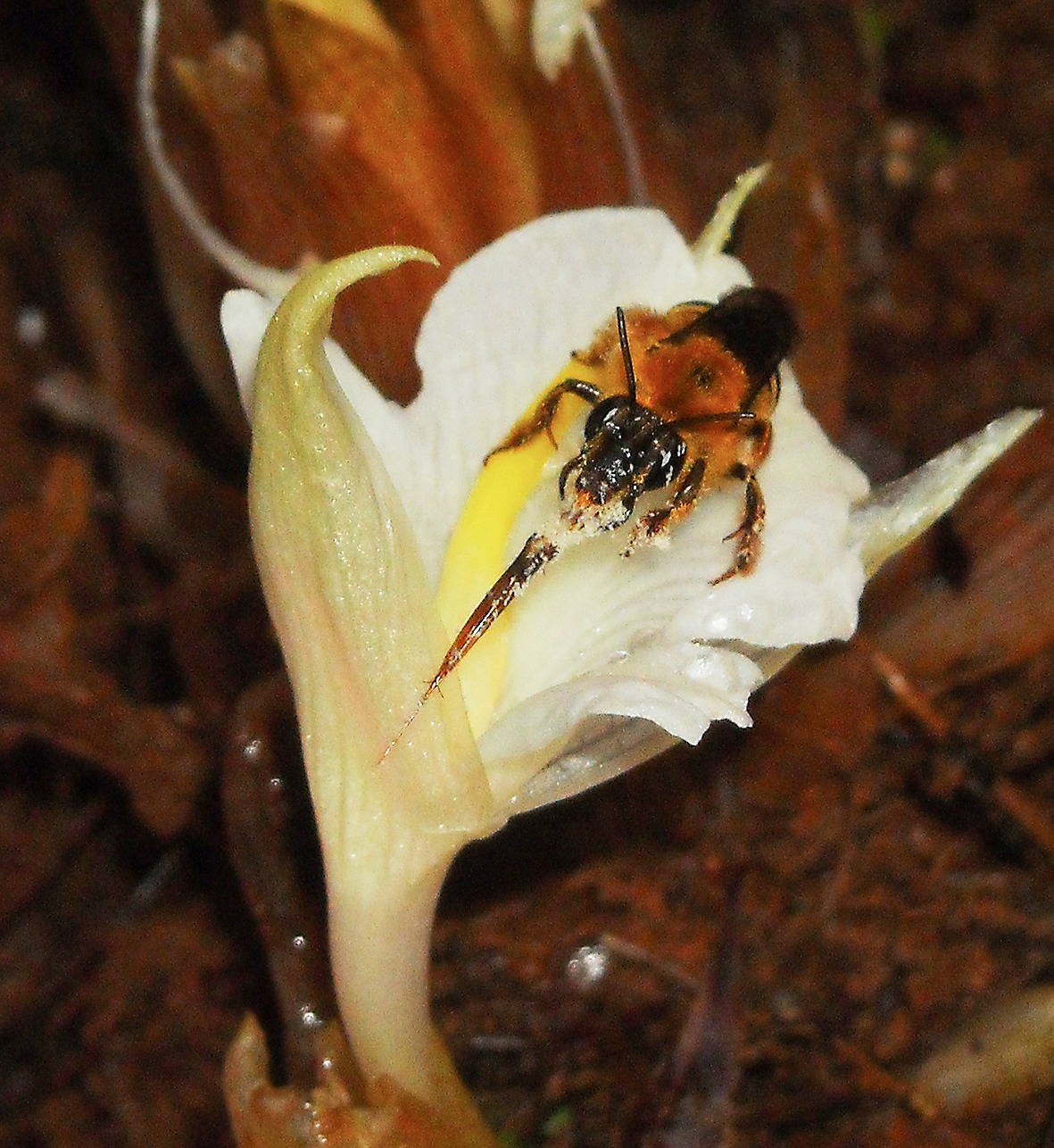Secondary pollen presentation (SPP) is a floral mechanism of pollination adaptation in which pollen is presented on floral structures (the second presenter) other than anthers. SPP mechanism has been reported in two ginger families (Marantaceae and Cannaceae), in which SPP plays an important role in the interaction with pollinators. However, there is no report in Zingiberaceae.
Prof. LI Qingjun’s team of Xishuangbanna Tropical Botanical Garden (XTBG), in cooperation with Prof. John Kress of National Museum of Natural History of USA, conducted a study in Lincang, Yunnan province, southwest of China (23°35′N, 100°04′ E; altitude 1890 m), in the flowering seasons of 2011 and 2012. They described a novel SPP mechanism in nature from a wild ginger (Zingiber densissimum S.Q.Tong & Y.M.Xia, a perennial herb distributed in southwestern Yunnan and Thailand) of Zingberaceae. They further aimed to explore how the pollen arrangement of SPP affected pollen removal during the interaction with different pollinators.
The preliminary field observation indicated that pollen in Zingiber densissimum was not only exposed in the anther but also in other structures such as the labellum. The researchers thus intrigued to explore the mechanisms of reproductive adaptation in the species. They wanted to seek the features of pollination ecology in Zingiber densissimum and how SPP was achieved. They further wanted to see how SPP affected pollen export during the pollination process by different pollinators.
Field observations and experiments revealed that each individual of Z. densissimum generally had one flower open per inflorescence each day, with floral longevity less than one day. No autonomous selfing was found, and flowers were partially self-incompatibly. Two bee species, Macropis hedini (Melittidae) and Amegilla zonata (Apidae), commonly visited the flowers. Both bee species removed pollen grains from the labellum staminode and ventral pollinators (A.zonata) removed more pollen grains from the labellum staminode than dorsal pollinators (M.hedini) in a single visit. Two floral characters were significant for the function of SPP. One was the close positioning of the anther to the labellum staminode, the other was the aggregated pollen chains.
The study was the first report on the occurrence of pollen chains associated with SPP in angiosperms and the first record of SPP in Zingiberaceae. The researchers found the new SPP mode promoted the capacity of different pollinators to remove pollen. As a simultaneous pollen presentation strategy, this new SPP mode was probably evolved under selection via male function.
The study entitled “A New Secondary Pollen Presentation Mechanism from a Wild Ginger (Zingiber densissimum) and Its Functional Roles in Pollination Process” has been published in PLoS ONE.

Pollen grains from the labellum of a flower are deposited on the stigma of other flowers. (Image by FAN Yongli) 
Contact
LI Qingjun, Ph.D Principal Investigator
Key Laboratory of Tropical Forest Ecology, Xishuangbanna Tropical Botanical Garden, Chinese Academy of Sciences, Mengla, Yunnan 666303, China
Tel: 86-871-68125332
E-mail: lqj@xtbg.org.cn
|


